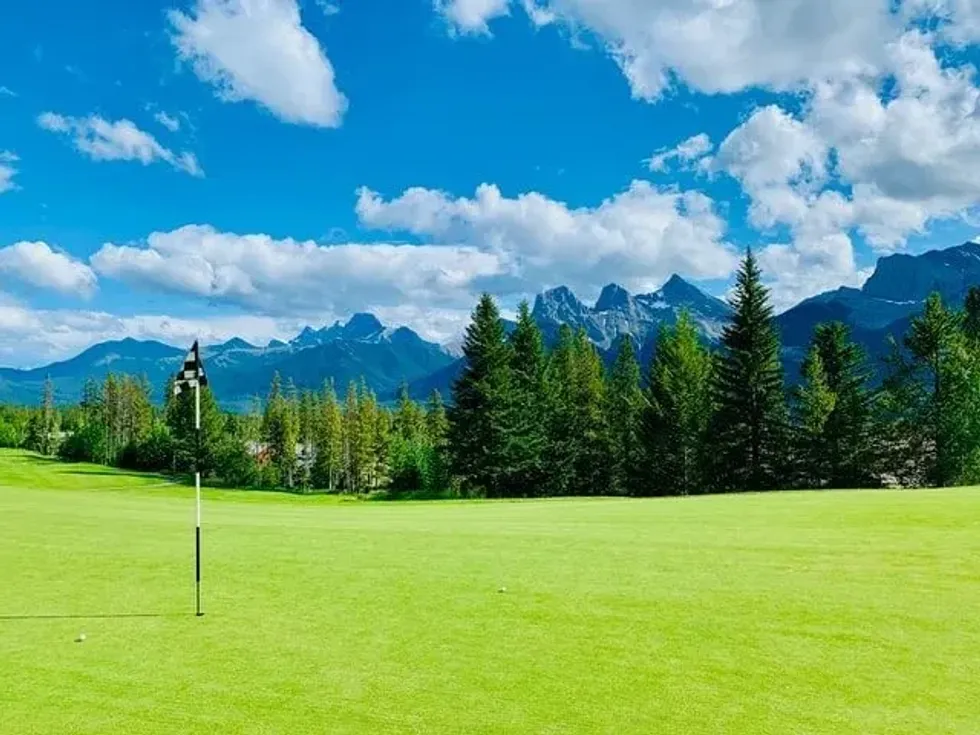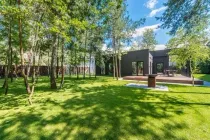Kentucky Bluegrass Facts: Read About Its Maintenance & Growth

Kentucky is situated in the Southeastern region of the United States, with Frankfort as its capital.
This state encompasses Appalachian mountains in the East, Ohio River on the North, Missouri in the West, and Tennessee in the South.
This state is famous for horse riding, Kentucky Fried Chicken (KFC), amusing sceneries, and Kentucky bluegrass. There is also bluegrass music introduced because of the prominence of Kentucky bluegrass.
This is a common meadow grass that can be grown in any weather condition. Kentucky bluegrass is a smooth grass, and the grass industry in the United States is prominent after discovering this grass.
Kentucky Bluegrass Types
The Kentucky bluegrass is not blue, and its scientific name is 'Poa pratensis.' It has 200 varieties that are prominent globally, and each of these varieties renders new characteristics altering itself to the climatic conditions.
This grass is indicative of a degraded and disturbed landscape and is termed as an unwelcome exotic plant in the native grasslands of Canada. The species 'Poa pratensis' was discovered by Carl Linnaeus in his famous work 'Species Plantarum' in 1753.
When the Kentucky bluegrass grows with its natural height, which is approximately two to three ft (61 - 91.4 cm), they seem to be blue, and so the name Kentucky bluegrass was given because of its flower heads.
Kentucky bluegrass also blossoms and has flowers when they grow fully.
There are 14 parts of Kentucky bluegrass. i.e., rhizome, node, leaf buds, sheath, stolon, tiller, collar, mid-rib, sheath node, leaf blade, auricles, ligule, seedheads, and spikelet.
Auricles are an optional part of various species of Kentucky bluegrass.
The name 'Poa pratensis' is derived from Greek and Latin, where 'Poa' means 'fodder' in Greek and 'Pratensis' is pratum which means 'meadow' in Latin.
The Kentucky bluegrass varieties are strong rhizomes or stolons, perennials, and bunch-type annuals.
The bluegrass varieties vary in many aspects like disease resistance, texture, color, weather tolerance, water use, shade and wear tolerance, stand density, thatch production, and level of required maintenance.
Advocate, Arboretum, Argyle, Barblue, Baritone, Belmont, Cabernet, Cache, Delta Fylking, Harmony, Kenblue, Kimono, Mesa, Monopoly, Newport, Parade, Park, Parkland, Piedmont, Plush, Sonoma, South Dakota, Vantage, Vanessa, Victa and Wabash are a few varieties of Kentucky bluegrass which require less maintenance. They are susceptible to all kinds of diseases.
Absolute, Alpine, America, Argos, Bensun, Bluemoon, Bristol, Eclipse, Glade, Impact, Marquis, Merit, Midnight, Nugget, NuGlade, Ram I, and Sebring are a few varieties of Kentucky bluegrass that have shade tolerance.
Kentucky bluegrass is categorized into three types based on its characteristics; Elite turf types, BVMG turf types, and Common types.
Aggressive, Bellevue, Compact, Compact America, Compact-Midnight, Julia, Mid-Atlantic, and Shamrock are the sub-categories of Elite turf types and BVMG turf types.
Abbey, Baron, Blue Chip, Blue Star, Cannon, Clearwater, Crest, Dragon, Envicta, Fortuna, Gnoma, Goldrush, Marquis, Merit, Nassau, Raven, and Victa also come under the BVMG turf type.
Geary, Ginger, Greenley, Huntsville, Kenblue, Alene, Newport, Park, Piedmont, Ronde, S-21, South Dakota, Argyle, Cache, Garfield, Voyager, and Wellington are the ones that come under a common type of grass.
The Elite turf type and BVMG turf type sub-category types of grass are again divided into categories under each type, which together account for over 100 varieties of Kentucky bluegrass.
Based on the seeds of Kentucky bluegrass, there are two varieties. i.e., Rough bluegrass and Hybrid bluegrass.
Barivierra, Colt, Cypress, Laser, Proam, Sabre, Sabre II, Snowbird, and Winter play come under the Rough bluegrass variety.
Bandera, Dura Blue, Fahrenheit 90, Fire and Ice, Longhorn, Solar Green, and 'Thermal Blue Blaze are varieties that come under Hybrid bluegrass.
The hybrid bluegrass varieties were introduced in the '90s, and Reveille was the first hybrid variety discovered in the USA before Texas and Kentucky bluegrass.
The Kentucky bluegrass is also being tested for forage grass which animals can eat.
Characteristics of Kentucky Bluegrass
This grass originated from Europe and Northern Asia, and it is a pasture grass in these parts of the world. Kentucky bluegrass was termed a premier lawn grass because of its adaptability and fine texture.
This is extensively used in lawns and sports fields. They form a beautiful lawn when grown and maintained. These are mainly susceptible to northern climates.
Kentucky bluegrass or Poa pratensis is a part of the normal grass Poaceae family.
Kentucky bluegrass is the only grass that has a luscious growth during spring.
Kentucky bluegrass is a kneeled canoe-shaped leaf or boat-shaped leaf which is 0.12–0.20 in (3.04 - 5.08 mm) wide, 8 in (20.3 cm) long, and also smooth or slightly roughened which has a round truncate ligule and is about 0.039–0.079 in (0.99 - 2 mm) long.
Kentucky bluegrass has light-colored lines, which are distinctive on both sides of the midrib.
Few species of Poa pratensis that are Kentucky bluegrass also have fine hairs on edge.
The Kentucky bluegrass has oval sprinklets which are 0.12–0.24 in (3.04 - 6.09 mm) long and have two to five florets that are purplish-green or gray, a conical panicle which is about 2 - 8 in (5.08 - 20.3 cm) long and has basal whorls with three to five branches.
Poa pratensis flowering season is from May to July.
The annual meadow grass that is 'Poa annua' and rough meadow grass that is 'Poa trivialis' has a silvery pointed end, contrasting the short and square-ended 'ligule.'
Kentucky bluegrass is a herbaceous perennial plant which means that they don't have a wood stem above the ground.
Kentucky bluegrass spreads out itself with the help of rhizomes with the help of rootstock creeping, and tillers. IT forms a close mat when the broad and blunt leaves spread at the base.
Kentucky bluegrass is generally short-lived in the Southern regions as they have tropical and hot climates.
Kentucky bluegrass is dark green, and the shades may vary according to the varieties. It can be light blue or green, and Poa annua and Poa trivialis have apple-green color.
Kentucky bluegrass shows slow root growth during humid climates and drastic growth during fall and spring.
Kentucky bluegrass has a luscious growth in the northern regions.
Most people prefer the Kentucky bluegrass because they grow into dense sod once their germination begins and spreads widely.
The Kentucky bluegrass is drought tolerant during hot temperatures.
Kentucky bluegrass has tolerance over heavy use of this bluegrass.
Kentucky bluegrass can repair itself from any damage caused.
Kentucky bluegrass is generally preferred due to its smooth texture.
Kentucky bluegrass has a limited shade tolerance.
Kentucky bluegrass has a one-year life cycle, and before it dies, it produces seeds that form a dense sod, which continues.
Kentucky bluegrass needs high water maintenance for its proper growth.
Kentucky bluegrass grows about 18 to 24 inches tall (45.7 - 61 cm), and they germinate within 14 to 30 days, and the luscious growth takes up to two weeks. However, these parameters vary for different varieties.
The pepper and salt skipper butterflies, Myrmus miriformis, a grass bug, Amara aenea, a common sun beetle, Pyronia tithonus, the gatekeeper, Maniola jurtin, which are caterpillars of the meadow brown, Eupelix cuspidata which belongs to the leafhopper family, are all insects that depend on Kentucky bluegrass for food.
The grass bug eats the young blades and developing seeds, and the common sun beetle feeds on developing seeds of Kentucky bluegrass.
Stagonospora montagnei, Drechslera poae, Phaeoseptoria poae, Epichloë typhina, Puccinia brachypodii var. Poae-nemoralis, Wojnowicia hirta, and Stagonospora nodorum are species of fungi to which Kentucky bluegrass serves as a host, and it also serves as a host to Claviceps purpurea when consumed causes ergotism.
Kentucky bluegrass turns brown during stress or high temperatures in winters.
Kentucky bluegrass has shallow roots.
Perennial ryegrass and Kentucky bluegrass show various characteristics like high wear resistance, damage repair, etc.
Compact variety of bluegrass may turn purple during winters when they are dormant.
Rough bluegrass variety appears as weed during summer when under full sunlight.
The Hybrid bluegrass variety is heat and drought-resistant grass which scientists developed.
Powdery mildew and fall armyworms frequently affect Kentucky bluegrass, and the 'Reveille' hybrid bluegrass is resistant.
The Julia bluegrass variety has high turf quality, and its density is high during summer than in winter.
Kentucky bluegrass grows on the limestone soils of Kentucky.
Kentucky bluegrass is germinated when the soil temperature is between 50 °F (10 °C) and 65 °F (18.3 °C).
The Kentucky bluegrass is mostly seen growing in mountain regions.
10 to 14 pounds (4.5 - 6.3 kg) of Kentucky bluegrass is spread across each acre during plantation.
When mixed with cool-season grass, this can be used as forage grass-fed by livestock grazing.

Requirements For Kentucky Bluegrass
The Kentucky bluegrass lawn is known as the KBG lawn in the USA. The grass industry skyrocketed after discovering Kentucky bluegrass, which created bluegrass varieties. Over 90% of Kentucky bluegrass seeds were produced in Idaho, Washington, and Oregon specialist farms in the '50s and early '60s.
Kentucky bluegrass is seen as lawn grass along with perennial ryegrass, which is laid in athletic fields, golf courts, etc.
KBG lawn care requires a good water source, sunlight, and fertilizers like nitrogen fertilizer.
Herbicides help to control the tall and luscious growth of annual grasses.
KBG lawn is also checked for soil compaction and aeration during maintenance.
The soil surface is checked for fertilization before spreading the Kentucky bluegrass.
Due to its shallow roots, the dead grass can be removed easily while the new grass seeds germinate.
Lawn care should also check the soil temperatures, as it can easily lead to the drought of lawn grass.
Different methods are followed every three months during lawn care.
Mowing, weed prevention, fertilization, seeding and overseeding, bare spot repair, weed control, fertilization, and watering are usually done from March through May.
Mowing, fertilization, watering, pest control, and soil testing are done from June through August.
Mowing, weed control, fertilization, seeding and overseeding, watering, aeration and dethatching, leaf management is done from September through November.
Yard Patrol, Tool Maintenance, Late-Winter Flush are done from December through February.
In established lawns, gradual water reduction up to 1 inch (2.54 cm) should be made every 10 to 14 days as they cannot sustain over-watering.
Due to the KBG's speed of growth, it develops thatch, resulting in lawn diseases, drought, and brown patches, and it can be prevented through de-thatching and aeration of the soil.
Soil testing is important as high alkaline soils which mean soils having high pH, turn the leaves pale green.
Iron is an important fertilizer element used in lawn maintenance.
Snow often affects the Kentucky bluegrass, and in turn, it causes lawn diseases hence mowing is done promptly every three months.
10 to 14 pounds (4.5 - 6.3 kg) of Kentucky bluegrass is planted for each acre.
All the grass species in the world are quite similar but have varying characteristics. However, every grass-grown and well-maintained can help to make your lawn look amazing. Most people prefer to have greenery under their feet for recreational purposes and to stay connected with nature. Parks around the world are covered with lawn grass for people to enjoy.
FAQs
Q. Why is Kentucky bluegrass so expensive?
A. Kentucky bluegrass is expensive for larger areas as it needs maintenance and the growth is slow, and it requires fertilizer and irrigation, making it expensive.
Q. How fast does Kentucky bluegrass grow?
A. This grass takes time to grow, but it takes only 14 to 30 days to germinate, and it takes two to three weeks to spread widely.
Q. How tall will Kentucky bluegrass grow?
A. It has boat-shaped leaves which grow about 18 to 24 inches (45.7 - 61 cm) tall and spread densely.
Q. How long does Kentucky bluegrass live?
A. It has a one-year life cycle, and before it dies, it produces the seeds. This is the only grass that is green during spring.
Q. Is Kentucky bluegrass hard to grow?
A. It is easy to grow and manage Kentucky bluegrass, except it cannot sustain drier summer climates.
Q. Does Kentucky bluegrass turn brown in winter?
A. Though this grass is drought tolerant, under drought stress or during high temperatures in winter, the Kentucky bluegrass turns brown.
We Want Your Photos!
More for You
Bachelor of Science specializing in Botany, Master of Science specializing in Clinical Research and Regulatory Affairs

Sridevi ToletyBachelor of Science specializing in Botany, Master of Science specializing in Clinical Research and Regulatory Affairs
With a Master's degree in clinical research from Manipal University and a PG Diploma in journalism from Bharatiya Vidya Bhavan, Sridevi has cultivated her passion for writing across various domains. She has authored a wide range of articles, blogs, travelogues, creative content, and short stories that have been published in leading magazines, newspapers, and websites. Sridevi is fluent in four languages and enjoys spending her spare time with loved ones. Her hobbies include reading, traveling, cooking, painting, and listening to music.
Bachelor of Arts specializing in Psychology

Shreya YadavBachelor of Arts specializing in Psychology
Shreya has developed a diverse set of skills through her experience in client servicing, email marketing, content and e-commerce management, digital marketing, and creative content writing. Her educational background includes a Bachelor's degree in Psychology from Indira Gandhi National Open University, Delhi. Shreya's passion for ongoing learning and development is a testament to her commitment to excellence.
Disclaimer
1) Kidadl is independent and to make our service free to you the reader we are supported by advertising. We hope you love our recommendations for products and services! What we suggest is selected independently by the Kidadl team. If you purchase using the Buy Now button we may earn a small commission. This does not influence our choices. Prices are correct and items are available at the time the article was published but we cannot guarantee that on the time of reading. Please note that Kidadl is a participant in the Amazon Services LLC Associates Program, an affiliate advertising program designed to provide a means for sites to earn advertising fees by advertising and linking to Amazon. We also link to other websites, but are not responsible for their content.
2) At Kidadl, we strive to recommend the very best activities and events. We will always aim to give you accurate information at the date of publication - however, information does change, so it’s important you do your own research, double-check and make the decision that is right for your family. We recognise that not all activities and ideas are appropriate for all children and families or in all circumstances. Our recommended activities are based on age but these are a guide. We recommend that these ideas are used as inspiration, that ideas are undertaken with appropriate adult supervision, and that each adult uses their own discretion and knowledge of their children to consider the safety and suitability. Kidadl cannot accept liability for the execution of these ideas, and parental supervision is advised at all times, as safety is paramount. Anyone using the information provided by Kidadl does so at their own risk and we can not accept liability if things go wrong.
3) Because we are an educational resource, we have quotes and facts about a range of historical and modern figures. We do not endorse the actions of or rhetoric of all the people included in these collections, but we think they are important for growing minds to learn about under the guidance of parents or guardians.







